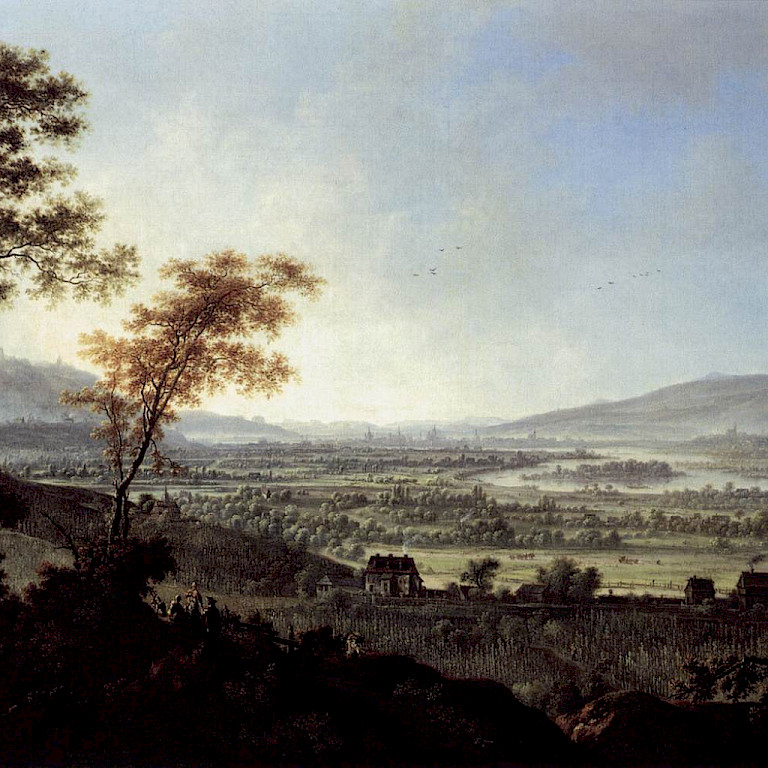
Johann Alexander Thiele, Blick von den Lößnitzhöhen auf Dresden
gemeinfrei
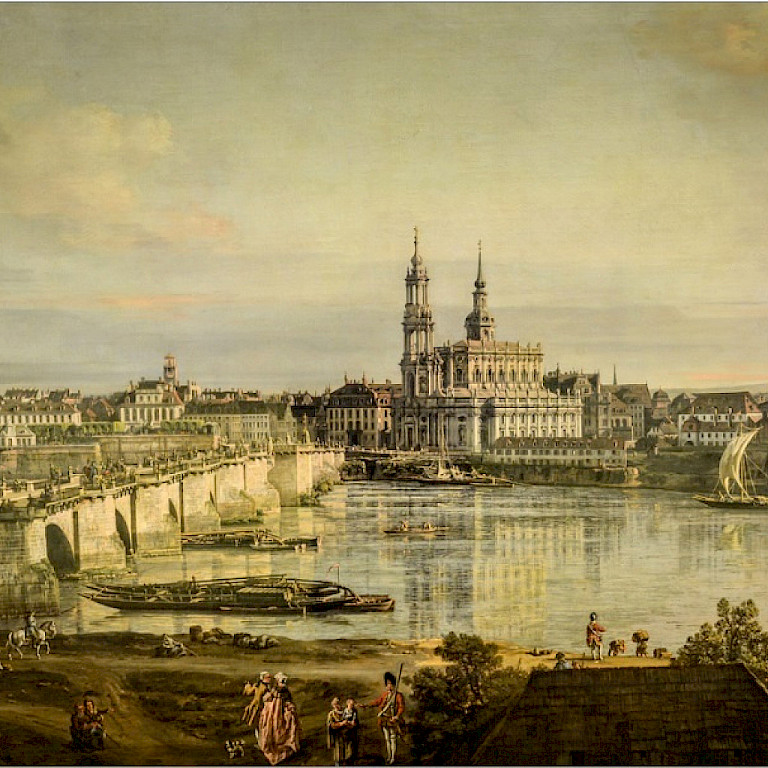
Bernardo Bellotto, Blick auf die Hofkirche Dresden, 1765
gemeinfrei
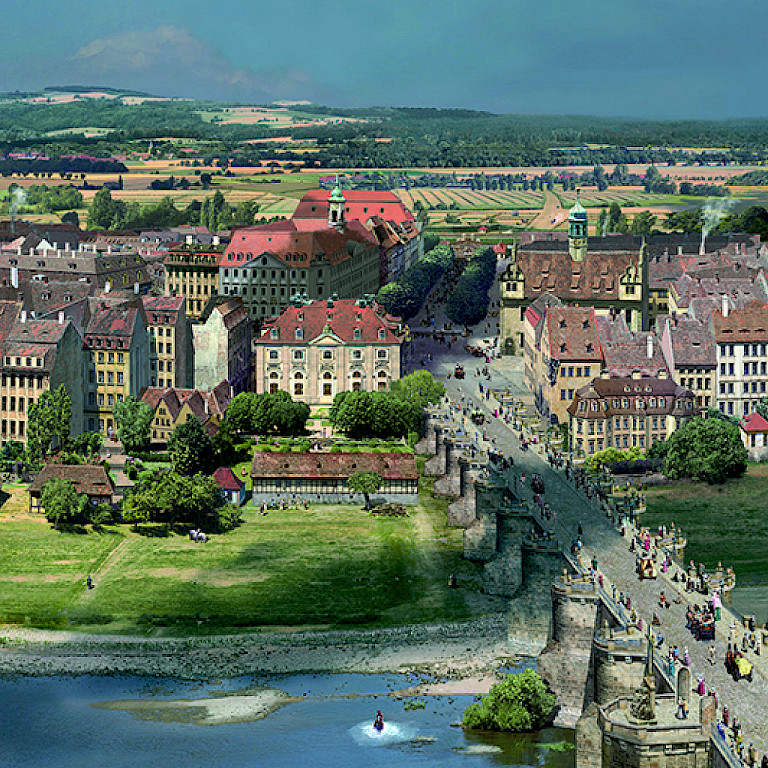
Blick auf die Neustadt
Foto: Asisi Panometer
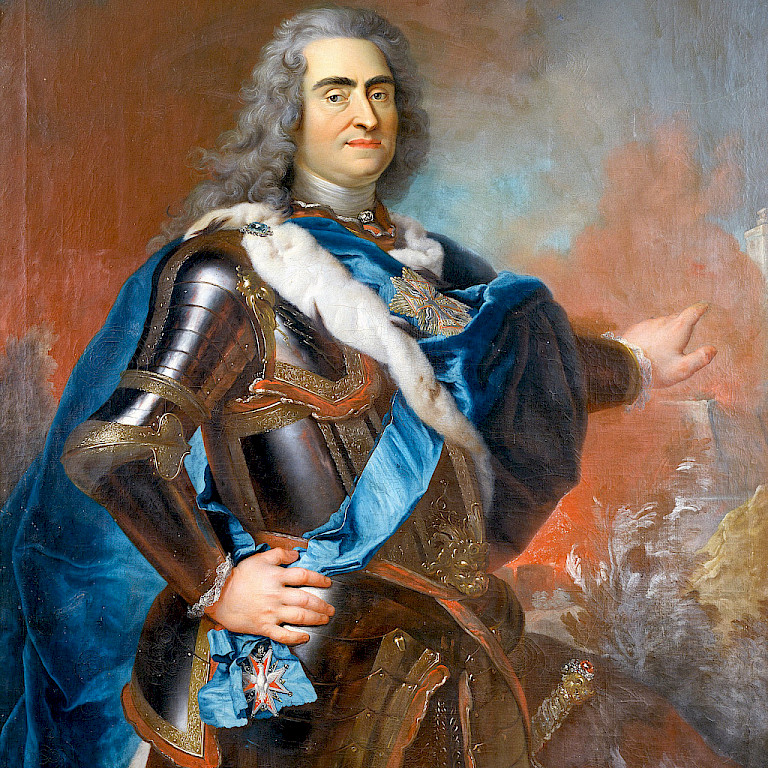
Louis de Silvestre, König August II. zu Felde
gemeinfrei
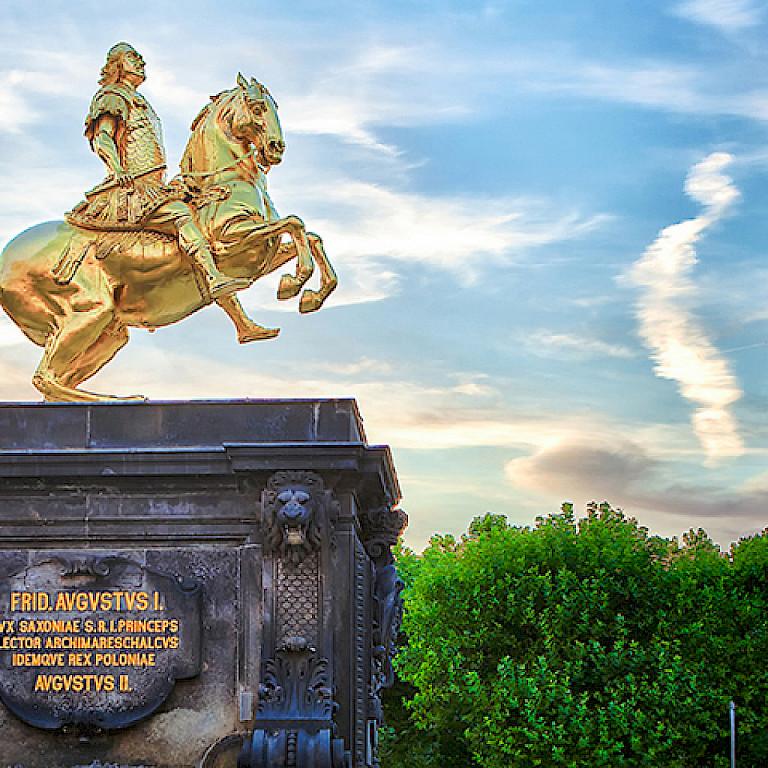
Der Goldene Reiter
modernmovie/stock.adobe.com
05 THE HEART OF EUROPE
We are approaching Dresden, accompanied by the work of the landscape painter Johann Alexander Thiele. On the greatly enlarged copy of one of his paintings next to the stairs, the view from the Lößnitz slopes near Radebeul goes upstream into the Elbe valley. The varied landscapes always gave artists like Thiele, and above all painters of the Romantic era, a great deal of inspiration.
A landmark symbolically shows us that we are standing at the city gates. It is time to discover the myth of the baroque city. On the one hand, it is the location in the picturesque Elbe valley that makes the city so special. On the other hand, it is its architecture with its imposing buildings, art and cultural treasures. Both elements can be found in Canaletto’s paintings. The bridge is also special. Until the 19th century it was the only continually available way to cross the river Elbe in the region and in addition it was the connection between Dresden and Altendresden, the old part of the city.
Altendresden, on the right bank of the river Elbe, which emerged in the Middle Ages from a Slavic settlement, had belonged to the royal seat since the middle of the 16th century. After it had been almost completely destroyed by a devastating large fire in 1685, Elector Johann Georg (John George)the Third and his second oldest son, Augustus the Strong, began the reconstruction following the baroque urban planning principles. Characteristics of this are the certain shape of the marketplace and the dead straight streets, which are closed by representative buildings. While Augustus was still alive the newly constructed city area was called “New Town” or New Royal City near Dresden”, which is how today’s name “New Town” came into being.
Baroque Dresden was the royal seat of one of the seven electors of the Holy Roman Empire of the German Nation. However, Augustus the Strong, born as Frederick Augustus the First wanted to be more than an Elector. He wanted to have a King’s crown which he could only obtain outside of the Holy Roman Empire.
Enormous bribes, his conversion to the Catholic faith, and skilful diplomacy and military pressure finally led to the Elector, Augustus the second, being ceremonially crowned King of the Poles and Grand Duke of Lithuania, in Cracow in 1697. The ascent into the circle of the great European powers was thus accomplished.
Augustus the Strong was known in ensuing ages as a synonym for waste and self-indulgence – but he was a promoter of the arts, of science and of trade, In the next part you will get to know the ruler and his family a little better.